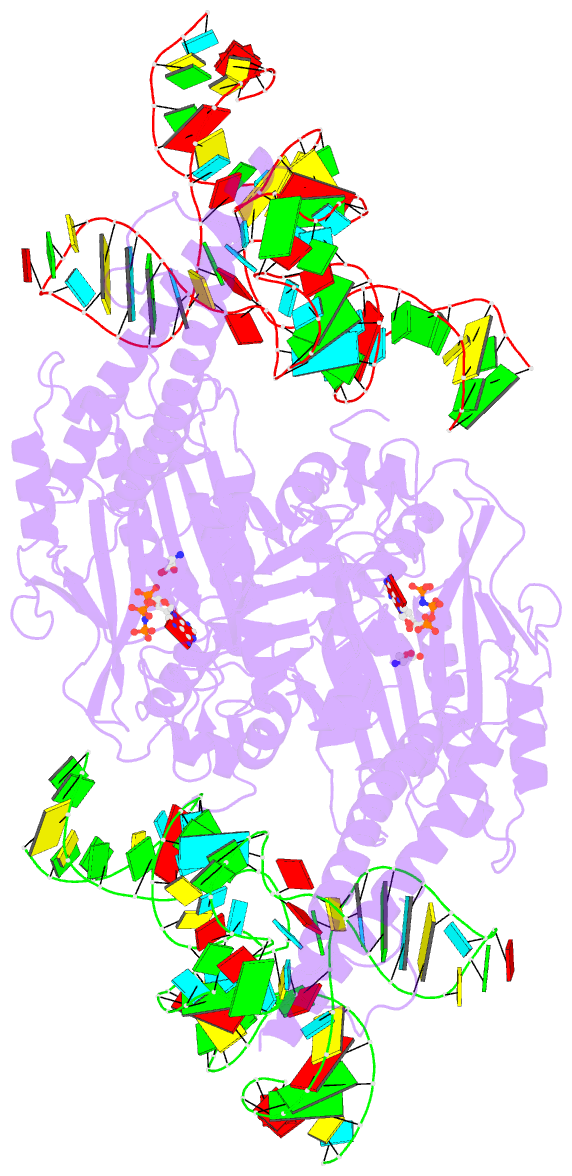Summary information and primary citation
- PDB-id
- 4rqe; DSSR-derived features in text and JSON formats
- Class
- ligase-RNA
- Method
- X-ray (4.0 Å)
- Summary
- Human seryl-trna synthetase dimer complexed with two molecules of trnasec
- Reference
- Wang C, Guo Y, Tian Q, Jia Q, Gao Y, Zhang Q, Zhou C, Xie W (2015): "SerRS-tRNASec complex structures reveal mechanism of the first step in selenocysteine biosynthesis." Nucleic Acids Res., 43, 10534-10545. doi: 10.1093/nar/gkv996.
- Abstract
- Selenocysteine (Sec) is found in the catalytic centers of many selenoproteins and plays important roles in living organisms. Malfunctions of selenoproteins lead to various human disorders including cancer. Known as the 21st amino acid, the biosynthesis of Sec involves unusual pathways consisting of several stages. While the later stages of the pathways are well elucidated, the molecular basis of the first stage-the serylation of Sec-specific tRNA (tRNA(Sec)) catalyzed by seryl-tRNA synthetase (SerRS)-is unclear. Here we present two cocrystal structures of human SerRS bound with tRNA(Sec) in different stoichiometry and confirm the formation of both complexes in solution by various characterization techniques. We discovered that the enzyme mainly recognizes the backbone of the long variable arm of tRNA(Sec) with few base-specific contacts. The N-terminal coiled-coil region works like a long-range lever to precisely direct tRNA 3' end to the other protein subunit for aminoacylation in a conformation-dependent manner. Restraints of the flexibility of the coiled-coil greatly reduce serylation efficiencies. Lastly, modeling studies suggest that the local differences present in the D- and T-regions as well as the characteristic U20:G19:C56 base triple in tRNA(Sec) may allow SerRS to distinguish tRNA(Sec) from closely related tRNA(Ser) substrate.





